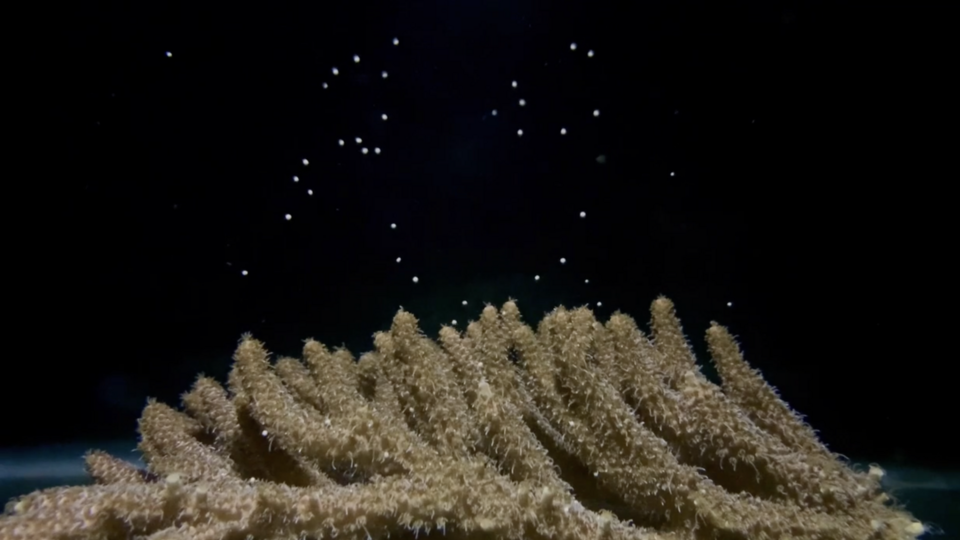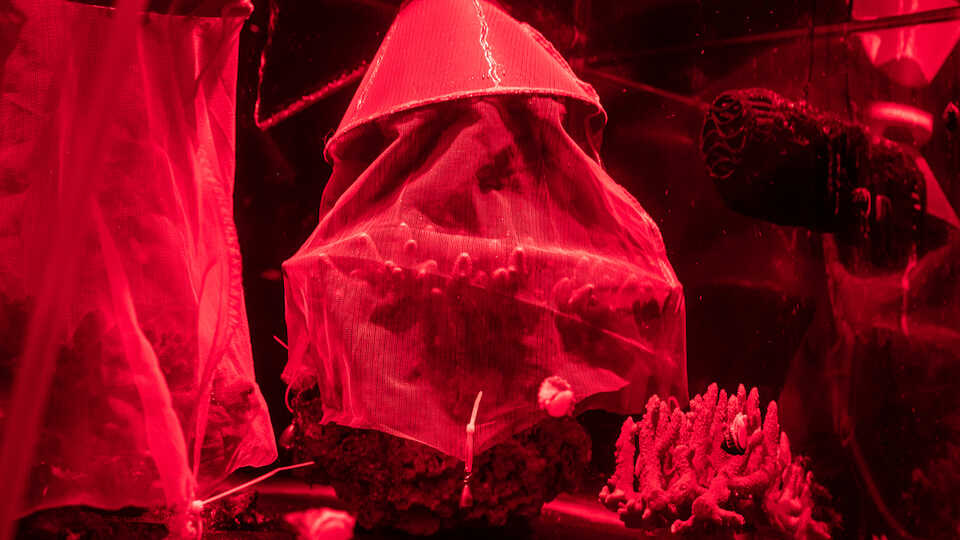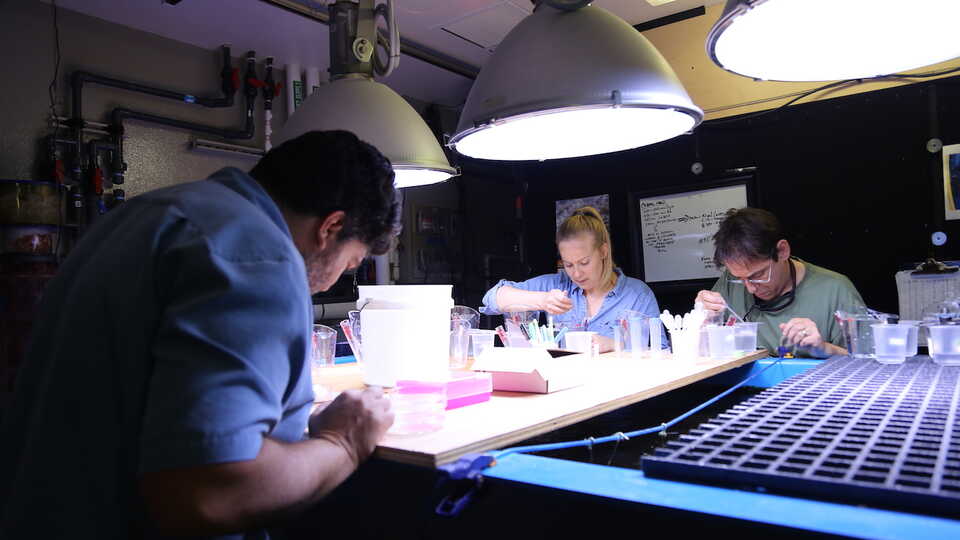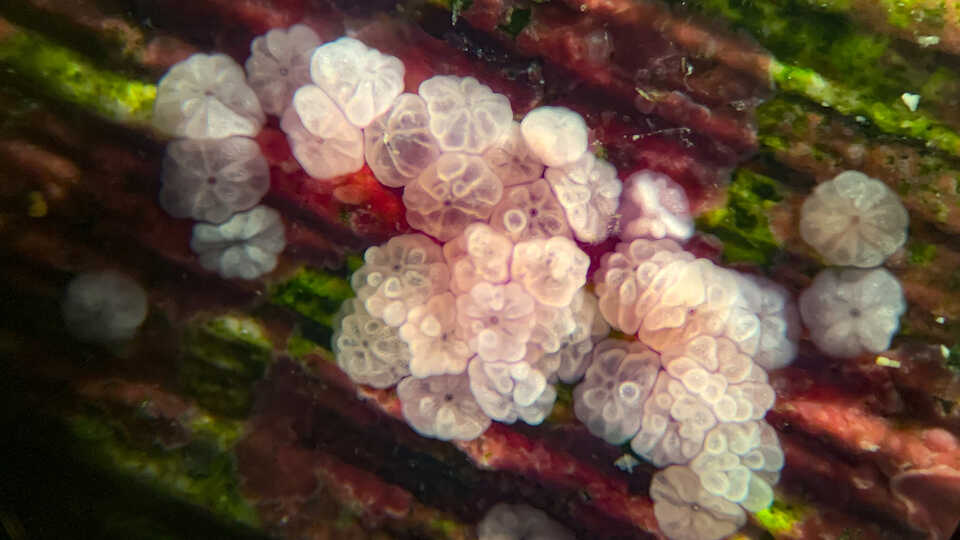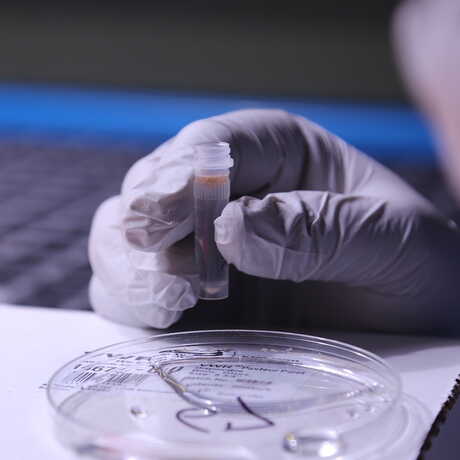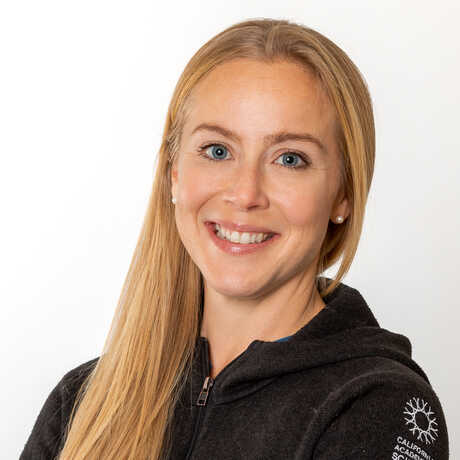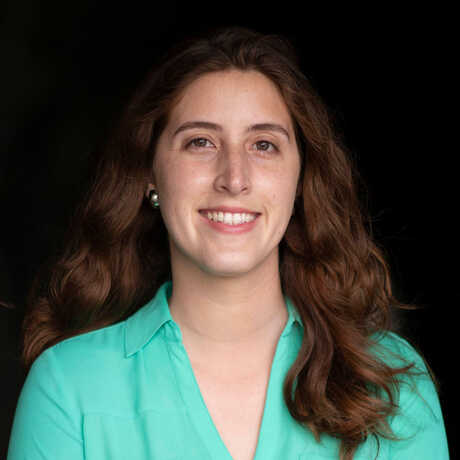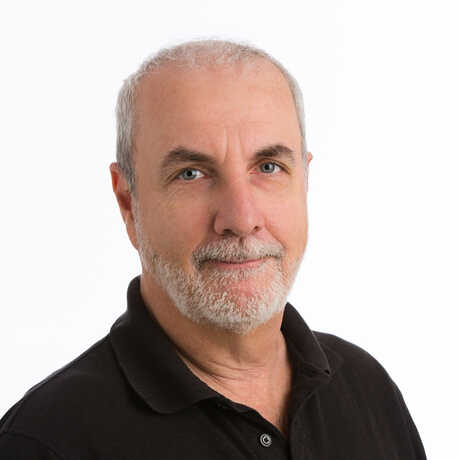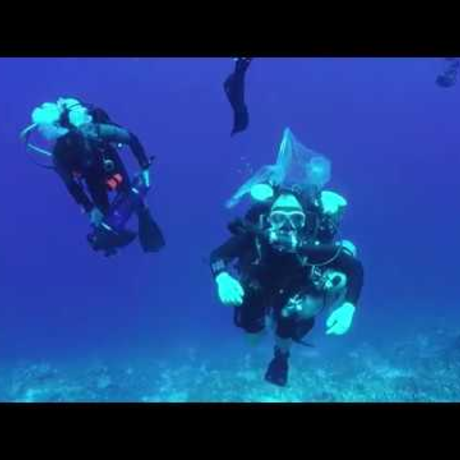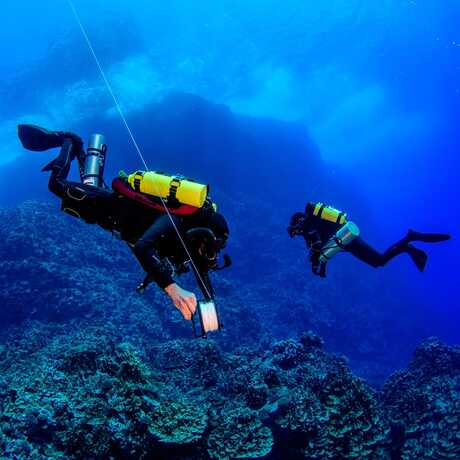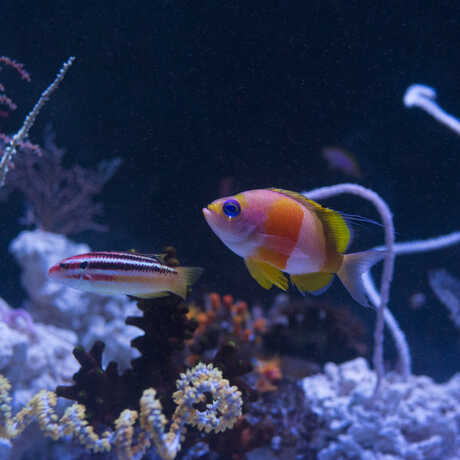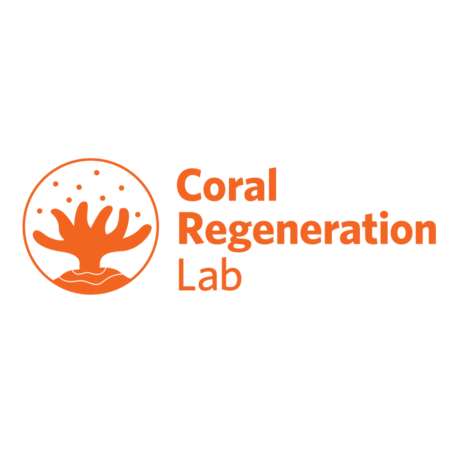
Coral reefs are critical ecosystems that harbor biodiversity, sustain fishing economies, and provide habitat for more species than any other marine environment. They also provide protection for rapidly changing coastlines, serving as a natural barrier between land and sea that mitigates flooding, erosion, and storm damage. But nearly 75% of the world’s coral reefs are currently threatened by global stressors like coral bleaching and ocean acidification, which are caused by climate change, and local stressors like overfishing, habitat destruction, and pollution (including on deep-water reefs). As global temperatures rise, we are losing coral reefs around the world to coral bleaching and disease at an alarming rate.
But corals are surprisingly resilient. After becoming the first aquarium in the United States to spawn coral in a lab setting, CoRL’s conservation breeding efforts have resulted in several successful spawns since 2018. Land-based spawning has opened up whole new avenues for scientific research, from selecting for more resilient individuals to increasing genetic diversity on coral reefs. By identifying hardy, heat-tolerant corals, researchers hope they can speed the pace of adaptation to warming oceans in the face of climate change. This work is part of the Academy’s Hope for Reefs initiative to reverse the rapid decline of our planet’s coral reefs by 2030.
The lab also serves as a convening space for researchers in the Bay Area and beyond. While the CoRL team is testing cutting-edge techniques to regenerate reefs, the researchers are also collaborating with other local institutions—including UC Berkeley and Stanford—to explore further applications and fill in gaps in coral knowledge, including the physics of larval movement and the fat content of coral eggs.
Now, Academy researchers are gearing up for the annual spawning event in December 2023, where they will begin testing novel therapies to bolster young corals in their first year of life.
